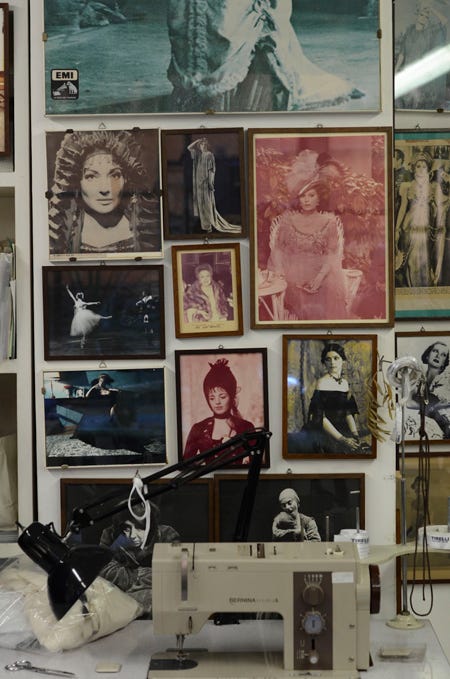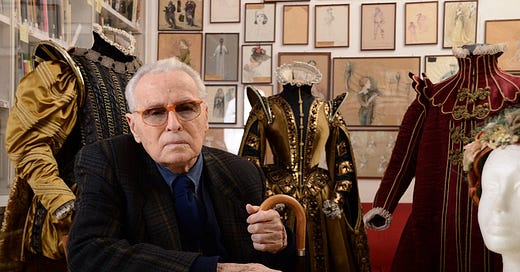We’ve likely all been captivated and entranced by Piero Tosi’s costumes. From his first film credit as costume designer—on Luchino Visconti’s Bellissima in 1951—he went on to work with most of the greats of Italian cinema: Vittorio De Sica, Federico Fellini, Pier Paolo Pasolini, Liliana Cavani, Franco Zefferelli, in addition to ten films with Visconti. Described by Hamish Bowles as “an alchemical genius whose fetishistic attention to period detail was matched by the perfectionism of the great directors with whom he collaborated,” Tosi was a great artist whose career spanned seven decades.

Known primarily for his exquisitely researched historical costumes, his contemporary looks were as expertly rendered—every detail considered, adding layers of meaning and depth to all characters and situations. No detail too small, Tosi would source period handkerchiefs to put in purses and period undergarments—all unseen on screen but contributing to the reality of the period setting for the actors. Marisa Berenson (who worked with Tosi on Death in Venice) told Bowles, “Luchino insisted on having every detail so perfect—what you had in your handbag, your underwear, what you had in your closet—everything had to be authentic and was geared to making you become that person.”

This interview, published in the September 1970 issue of Vogue, lifts the veil on some of Tosi’s process. The Damned, Medea, and Fellini Satyricon were all newly released and he had just finished working on Death in Venice (released the following year to much acclaim, garnering him his second Academy Award nomination)—lending his answers regarding research and costume production the freshness of recent memories.
Keep reading with a 7-day free trial
Subscribe to Sighs & Whispers to keep reading this post and get 7 days of free access to the full post archives.



